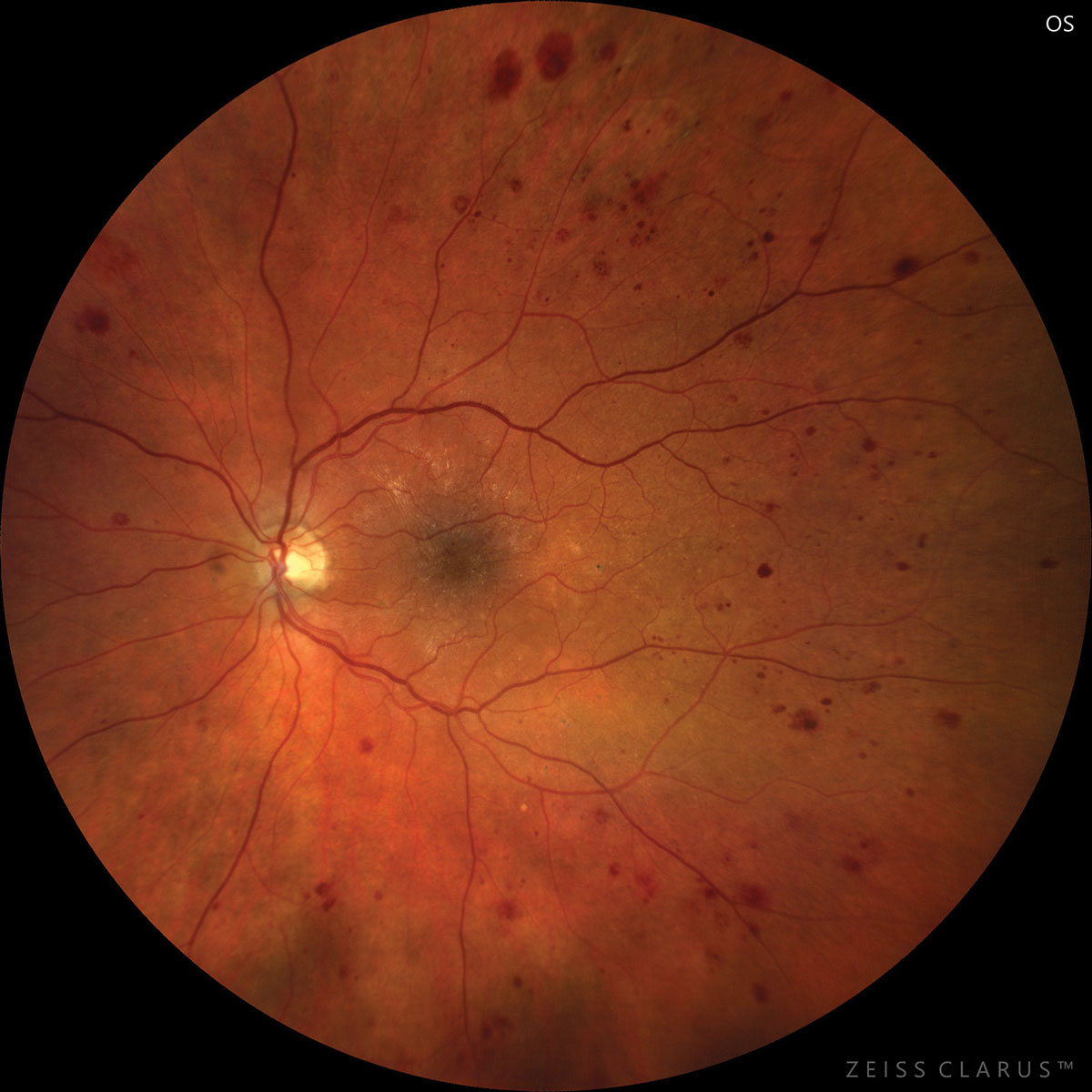 |
|
The findings of this study support DR screening in young adults and for T2DR interventions specifically designed for Hispanic and African American patients, as well as those between the ages of 20 and 39—all who are most affected by this disease. Photo: Jay Haynie, OD. Click image to enlarge. |
With diabetic retinopathy (DR) being a leading cause of blindness in the United States, updated studies regarding its prevalence and incidence in the setting of advancements in diabetic care over recent years are necessary and possibly even overdue. In a new study published last week in JAMA Ophthalmology, researchers sought to determine recent trends in DR prevalence stratified by baseline demographics to identify those populations at greater risk. They found that both type 1 (T1DR) and type 2 (T2DR) increased in prevalence from 2015 to 2022, especially in a younger population and Hispanics and African Americans.
A total of 359,126 patients were included in this cross-sectional epidemiologic evaluation between the years of 2015 and 2022. Patients were further stratified by age cohorts (20-29 years, 30-39 years, 40-49 years, 50-59 years, 60-69 years and 70 or older), race and ethnicity and sex.
The authors found that T1DR had a 15% increase in prevalence and T2DR had a 7% increase over the study period. The increase was greater among those aged 20 to 39 years; in Hispanic males, the odds ratio of T2DR was four-fold greater, followed in elevated odds by Hispanic women, Black men and Black women.
Across all racial groups, male subjects demonstrated higher rates of T1DR compared with women. In the 20 to 29 age group that experienced the greatest T1DR prevalence, white male subjects exhibited a 6.3-fold increase in prevalence. Similarly, an upward trend was seen in the 30 to 39 age group, which demonstrated a 1.96-fold increase.
“Like the T1DR findings, our analysis demonstrated upward trends in the prevalence of T2DR among younger age groups, specifically, the age categories 20 to 29 years and 30 to 39 years from 2015 through 2022” the researchers explained in their paper on the work. “An earlier age at diagnosis of DM is associated with DR, and reports of early onset DR have been recorded in the literature. Although prior studies have either not had the ability to include this age group or did not stratify by a younger age, making identifying this trend challenging, Lundeen et al. did evaluate individuals 20 years and older and also observed concerning increases in DR among young adults. Further, Wagenknecht et al. specifically evaluated pediatric diabetes and found increasing rates regardless of diabetes status while also disproportionately impacting minoritized patients.”
The authors pointed out that an increase in diabetes could also be the reason DR is increasing in this young adult population, and may also be associated with increasing rates of obesity.
Socioeconomic risk factors, lack of insurance, education, access to care and comorbidities such as obesity and hypertension could be some of the factors as to why such substantial racial and ethnicity population differences were observed among Hispanics and African Americans.
“Additionally, these minoritized groups are less likely to be screened and, therefore, treated for DR, further compounding this disparity,” the authors noted. “This also supports the notion that our study might be underreporting the severity of this population difference.”
It should be mentioned that a decrease in overall prevalence was noted in 2020 for both T1DR and T2DR, followed by a resumption of the overall trend to increase in 2021. The authors suggest this may be due to the COVID-19 pandemic, as decreases in patient volume during the early stages of the pandemic were reported.
“These findings support DR screening in young adults and for T2DR interventions specifically designed for racial and ethnic minoritized patients most affected by disease,” the authors concluded. “Future investigations are warranted to further investigate these trends among
young adults.”
In a commentary on this study also published in JAMA Ophthalmology, the authors were most surprised by the increase in the prevalence in the younger cohorts (aged 20 to 39 years).
“Most of the increases in prevalence of diabetes likely can be attributed to the aging of the United States population and possibly longer life expectancy among people with diabetes,” they explained. “According to the CDC, the age-adjusted incidence of diabetes has fallen from 8.4 per 1,000 adults in 2008 to 5.8 per 1,000 adults in 2021.” Recent research also supports the finding of high prevalence of DR among younger cohorts with diabetes reported by Markle et al., the commentary noted.
“A multicenter, population-based retinal imaging study of participants of the SEARCH for Diabetes in Youth Study sites identified DR prevalence rates of 52% among those with type 1 diabetes and 56% among those with type 2 diabetes,” they continued in their commentary. “It is unknown whether these high rates of DR among young people represent an increase in prevalence, detection of a previously unrecognized problem or an artifact of the relatively broad case definition for mild DR used in the SEARCH study.”
They also commented on Markle et al.’s study documenting the increase in DR prevalence, noting the complexity of it and how the results are likely affected by multiple factors, including increased recognition of the need to screen for and identify DR in younger adults with diabetes, increased attention to DR among all patients with diabetes since the introduction of new, effective pharmacological treatments, increased access to health insurance via the Affordable Care Act and COVID-19 public health emergency declarations, and potential increases in rates of DR incidence among people with diabetes. However, this last factor remains unknown and requires additional study, they noted.
Markle J, Shaia JK, Araich H, et al. Longitudinal trends and disparities in diabetic retinopathy within an aggregate health care network. JAMA Ophthalmol. June 13, 2024. [Epub ahead of print.] |

